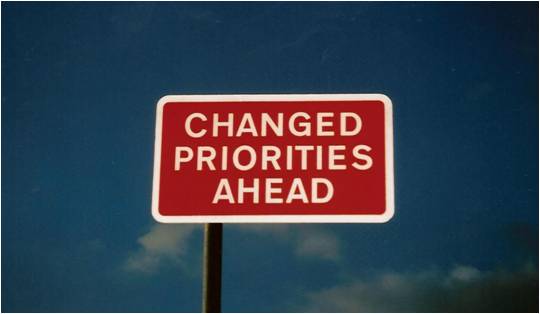 It is said, “All politics is local.” Picking up on that aphorism, I think it is equally true that all change is personal.
It is said, “All politics is local.” Picking up on that aphorism, I think it is equally true that all change is personal.
So Much Known – So Little Followed!
There is a substantial body of research and theory about organizational change management (OCM) dating back to the mid-50’s or even earlier. Most OCM findings seem to resonate with people who are facing, or who have faced organizational change. And yet, nearly all of the findings and recommendations from the body of OCM knowledge seem to be woefully lacking when it comes to increasing the success of change management initiatives. If this were not the case, why do so many change initiatives fail to meet their objectives?
For IT professionals, even the terminology can be confusing! I had a long, and I thought, enlightening conversation with a CIO some years back about the challenges and importance of managing change. About an hour into the conversation, it became apparent that he was talking about technical change management – configuration management, release control, testing, and all that good stuff, while I was talking about the so-called ‘soft’ stuff (which is so hard!) of organizational change management!
How Have You Dealt With Change?
Ultimately, to effect change such as that involved in the introduction of a new work process or new tool, or increasing collaboration across silos, or improving team effectiveness, individuals must leave behind habits and behaviors ingrained over many years and adopt new ones. Think about changes you have tried to make in your personal life – how many have truly succeeded? Be it weight loss, increased exercise, learning a new skill, or any other change, chances are you’ve had way more more failures than successes.
A couple of years ago, after 60 years of reasonably successful brushing of my teeth (I still have most of them!), my dental hygienist suggested a slight change to my brushing regimen. This did not require new skills, or new equipment, or any difficult physical movement. It just required changing a habit of literally, a lifetime. How long would it take to institutionalize this change – to make the new way of brushing my new habit?
For me, it took concentrated effort for about 6 months for the new brushing regimen to become habit – leading to my “Six Month Rule” for behavior change. And during that period, I slipped a few times. I did not suddenly decide to go back to my lifetime’s brushing habit, or decide to give up on the new approach suggested by the dental hygienist – no, I just lost focus in the early am when I got up, or the late pm when I went to bed, and – voila – I was back in the old routine! It took conscious effort, as well as all sorts of reminders to help me stick with the change long enough for it to become institutionalized! (For those facing a tooth brushing change, try a piece of string or rubber band around the handle of your toothbrush as a gentle reminder!)
The Six Month Rule – And Why Changes Fail
With business attention spans getting ever shorter, how can an organizational change that will take at least six months to shift behaviors be expected to stick? No wonder the “this too shall pass’ response to dictated change is so common – by the time the changes may be starting to take hold, top management has moved on to the next big challenge or opportunity!
And my “Six Month Rule” applies to changed behavior demanded of someone who believes in that change. Supposing for a moment, that my teeth brushing routine change was not something I believed in? Or that it required I learn a new skill? Or, as with an adjustment to a golf swing, it actually degraded my golfing abilities while I adjust to the new swing? (Visions of me walking around with gobs of food all over my teeth, apologizing and explaining, “Sorry about the filthy teeth. I’m learning a new way to brush – it should all be cleared up by Christmas!”) It’s no wonder that the response to so many corporate change programs is, “This too shall pass!”
Most of what we do during a day’s work is based on deeply ingrained habit. It’s not necessarily the ‘best’ way, or even the ‘right’ way – but it’s the way that is familiar too us and, most importantly, predictable. And it is these deeply ingrained behaviors that are so hard to change and that often derail organizational change initiatives.
Lessons Learned, Questions to Ponder
We can all learn lessons about organizational change management – whether we are leading them or simply participating – by looking into ourselves and identifying what we need to be doing differently, and how are we going to accomplish that. Achieving change at the personal level is crucial for most corporate change programs. While it is easy to depersonalize change at work as “something that’s going on around me”, the reality is that if we don’t change ourselves at some deep, personal level, the desired change will not take hold.
So, first ask yourself, “Do I want this change to succeed? What might be in it for me? What if it fails – how might I be impacted? Then, assuming you decide the change is positive, ask yourself, “What do I need to be doing differently? What will that look like and feel like? How will I go about making the personal changes happen? How will I recognize success or failure, and what consequences will I hold over myself?”




![Reblog this post [with Zemanta]](https://i0.wp.com/img.zemanta.com/reblog_e.png)







